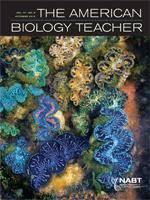Microbial cultures swiftly adapt to lethal agents such as antibiotics or viruses by acquiring resistance mutations. Does this remarkable adaptability require a Lamarckian explanation, whereby the agent specifically directs resistance mutations? Soon after the question arose, Luria and Delbrück devised a clever experiment, the fluctuation test, that answered this question in the negative: microbial adaptation, they showed, is entirely consistent with a Darwinian explanation. Their 1943 article is a classic of biology literature, with practical and theoretical implications that continue to expand today. Implementing an updated fluctuation test in a college teaching lab provides a simple experimental setting in which beginning students learn to apply basic principles of evolutionary biology and scientific reasoning, while gaining hands-on experience in core technical advances of contemporary life science.
How to translate text using browser tools
1 October 2015
The Luria-Delbrück Fluctuation Test as a Classroom Investigation in Darwinian Evolution
George P. Smith,
Miriam Golomb,
Sidney K. Billstein,
Stephen Montgomery Smith
ACCESS THE FULL ARTICLE
It is not available for individual sale.
This article is only available to subscribers.
It is not available for individual sale.
It is not available for individual sale.

The American Biology Teacher
Vol. 77 • No. 8
October 2015
Vol. 77 • No. 8
October 2015
cancer
Darwin
epigenetic modification
Lamarck
mutation
stress
yeast




